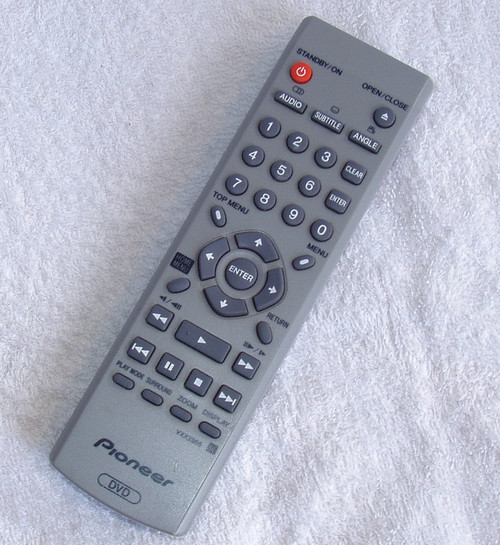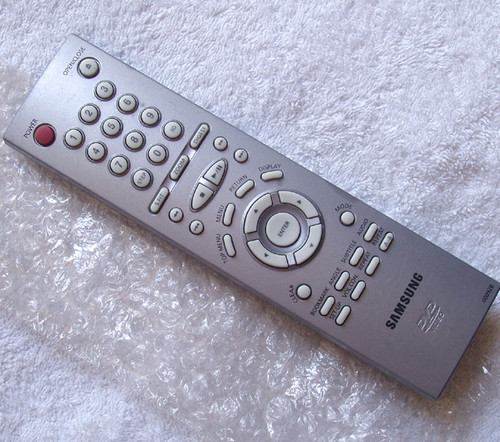HISTORY:
Removed from a piece of medical equipment, although this is not truly "medical grade" componentry - used for auxiliary support purposes originally.
What you are looking at is a dual pump system, Synchronous 240V AC 50Hz motor in the centre drives both pumps. The motor shaft operates thin rubber 45mm diameter diaphragms in the pumps at each end of the component.
Simple fan blades at one end for cooling although I personally think this is a waste of time, it never got hot while I was running it!
The whole assembly sits on four rubber mounts and the "running noise level" is very low, something akin to the low level "buzz" that a small water pump might make (indoor fountains etc)
The main thing to keep in mind when pondering if you had a use for this component is that it should ONLY be used with gases, NOT LIQUIDS. Originally it never had liquids flowing through it and although it MIGHT work ok, I wouldn't know about the integrity of the pump mechanism when it comes to liquids.
So, in brief that is what this component is all about ... please read on for more details
UNIDENTIFIED MANUFACTURER - Small Dual Pump
I do not know where this component was made, no markings at all on any part - just a paper sticker on the motor "240V"
Motor: 240V AC 50Hz Synchronous operation
Pumps are mechanically connected to the motor shaft via a non-linear arm - this pushes/pulls the rubber diaphragm inside the pump
The pump is completely sealed, you can easily access the diaphragm but not the pump valve itself. By this I mean you CAN get inside but there is a rubber gasket between two halves of the pump and I do not wish to damage that gasket and have left it alone.
In fact all parts of the component are readily accessible, with the exception of the pump.
Each pump has an inlet which sucks in the gas (usually air) and the other port expels the gas. In the original equipment, the two pumps were cascaded so that the outlet port of one pump connects directly to the inlet port of the other pump.
There is no reason why both pumps couldn't be run independently of each other.
Comes with the special tubing shown in the photographs and also a couple of extra lengths for "playing around" with. I will just call this PVC tubing with elastisers added as it is quite flexible and relatively easy to force over the Chrome portals in the photograph but I couldn't truthfully state that the tubing is Biomedical grade - I just don't know.
The gas flow is controllable using the device you can see in the photographs, one at the first inlet port and the other at the second outlet port. This is very much like an electronic "pot" control, the shaft (Brass) is a spline type and fits a standard knob as used in electronic equipment. By varying these controls, you can very precisely change the vacuum at the inlet port or the gas pressure at the outlet port. Why "very precisely"? because those shafts actually rotate through 6.5 complete revolutions, a bit like a multi-turn potentiometer. I assume there must be a thread/screw inside the control and there is a very small hole in the body through which the gas can escape when the control is fully opened.
The whole assembly is designed to sit on the four rubber feet (bolts/nuts/washers supplied)
DIMENSIONS:
Length: 160mm
Width: 105mm
Height: 80mm
NOTE: the width and height measurements are set by the thin plastic fan blades. The diecast body of the pump system is actually 50mm height x 80mm width
The fan blades MUST have free space around them otherwise they will "foul" and prevent the motor shaft from moving! If this blade (which is quite flimsy as it is made from thin, not very tough plastic) you need to go behind the blade and remove a C clip holding the blade to the shaft.
The tubing is various lengths, ranging from 90mm (connecting the two pumps together) to 320mm (going to the front panel of the equipment originally)
The rubber feet (necessary for overall stability and operating noise reduction) are 117mm apart and in two rows, 32mm from each other. The mounting is offset away from the pumps so that the weight is evenly distributed when mounted.
WEIGHT:
The total dual pump system weighs 1.4Kg, including all panel fittings showing the photograph(s)
COSMETIC CONDITION:
USED
NO damage to any part
Rubber feet (23.75mm diameter x 14,75mm height) are undamaged
Diaphragms are new replacements that I had to hand - both pumps have new diaphragms
Light oxidisation to one side of the motor iron laminations - nothing serious at all.
TESTING:
I had some spare parts for this pump system, and have actually replaced the diaphragms. The old diaphragms were not in bad shape but I felt it wise to change them for new anyway. The diaphragm is critical to the pump operation, failed diaphragm means no pump action!
Bearings in the motor are fine and no damage to any linkages.
I noticed one blade on the "cooling system" at one end of the dual pump was a bit "dodgy" so I applied a little Araldite to stabilise it. Quite frankly I feel the fan is a waste of time anyway!
Power up time ...
I had this running all day yesterday, it just sits there "purring" meaning that the operating noise level is very low. The motor only became slightly warm but never hot!
I am unable to measure how much gas these pumps can move (no test equipment for that purpose), if I put my finger over the inlet port there is a strong "sucking" going on! But it is not really strong. When I block the inlet port with my finger, it is easy to hear the pump "working harder" with a slight increase in the operating noise.
The usefulness of this dual pump is I guess limited by the imagination, one idea that came to mind was to use it as a fish tank air supply pump system. I imagine the ability to control the air levels at each pump individually could be useful. I actually did pop the second pump outlet into a glass of water and bubbles galore! I used the rotary air control to adjust the flow of those bubbles, it all worked well but alas, useless for me as I do not have any fish! Of course I left the inlet port alone so it would just suck air through the pump.
SAFETY NOTES:
Pretty obvious but two main points must be made ....
THIS IS NOT A SUBMERSIBLE PUMP - TO ATTEMPT TO DO SO WOULD BE FATAL TO YOU .... NEVER EVER SUBMERSE THIS PUMP SYSTEM
THE MOTOR IS RUNNING ON HOUSEHOLD 240V AC SUPPLY - YOU MUST KNOW WHAT YOU ARE DOING FROM AN ELECTRICAL VIEWPOINT. IF YOU ARE NOT FAMILIAR WITH WORKING SAFELY ON 240V AC SYSTEMS - DO NOT ATTEMPT TO USE THIS PUMP!

















